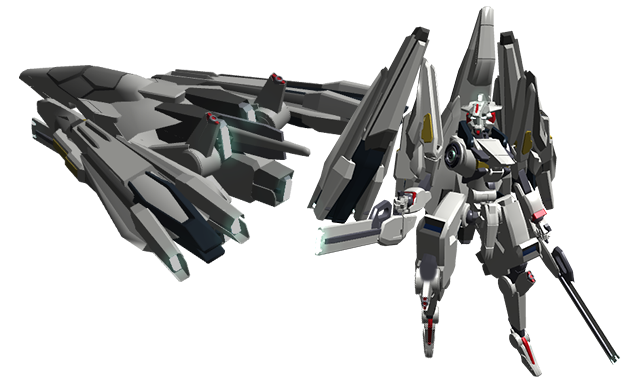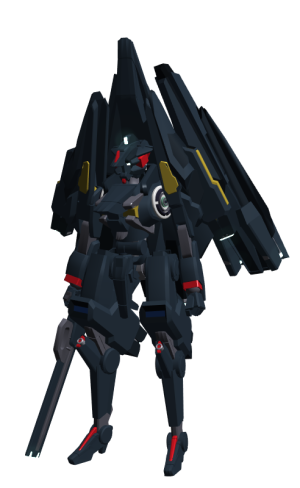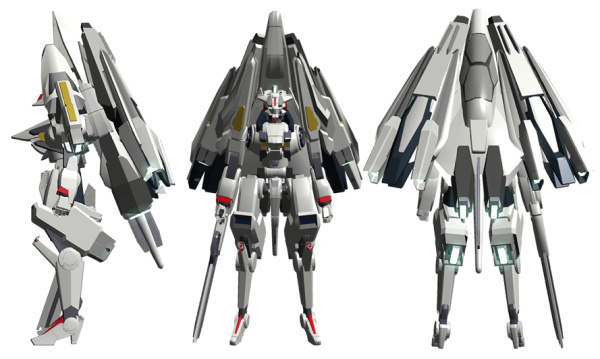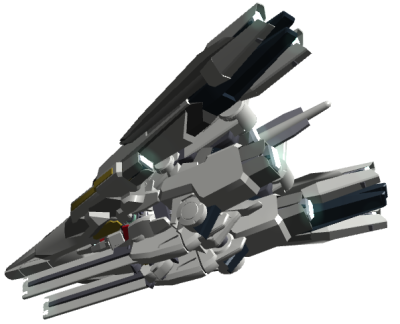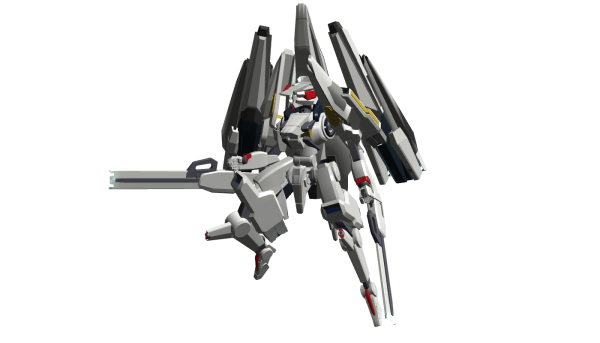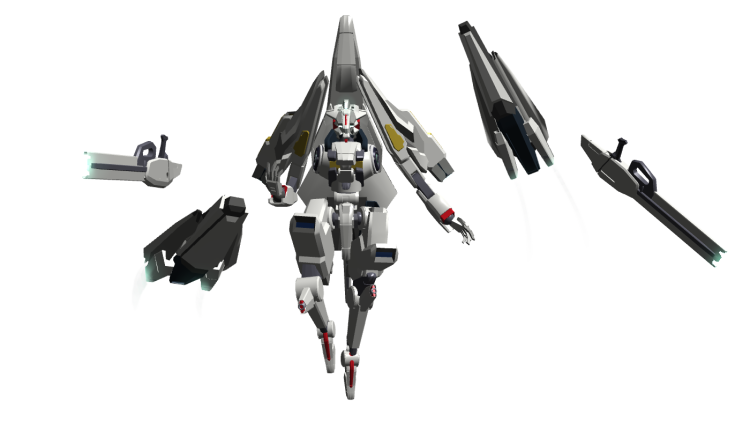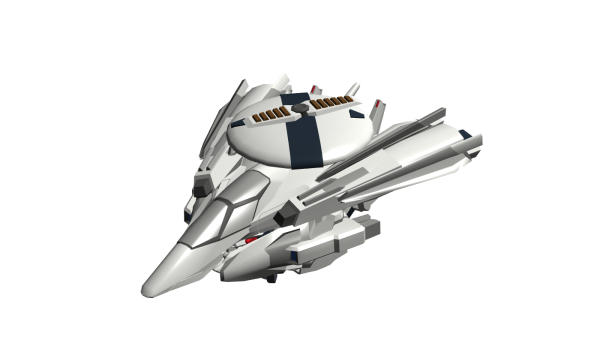Table of Contents
Banshee-class Strike Frame
Noval's first answer to the Variable Frame space, the Banshee-class is specifically designed to swiftly close on an enemy ship, deal large amounts of damage, and be out of range before the ship can retaliate. It is extremely fast, but offers little protection to its pilot other than its outstanding maneuverability.
First introduced in YE 42.
About the Banshee-Class
The Banshee-class was created to eliminate priority targets larger than itself. Rather than leveraging heavy bombs and missiles, the Banshee prefers potent ranged weaponry and a lighter weight profile. It's best defense is the skill of its pilot.
Designed primarily for space combat, the Banshee-class' is nonetheless capable of atmospheric flight.
Key Features
The Banshee-class features a number of novel systems that offer interesting opportunities for its pilot.
The first are its prominent Wing Drones. Capable of operating independently or in tandem with the Banshee-class, they extend the craft's combat area and improve its defensive capabilities.
The second is its variable operation modes. The Banshee-class' Fighter Mode is its fastest form, leveraging all ten NH-M-M5 Magnetically Attenuated Plasma Scramjet "MAPS" drives to push it near the theoretical speed limit for a craft its size. Its Strike Mode forgoes some speed in favor of improved maneuverability and weapon options. For most combat operations, Strike Mode is the intended form.
The last is its use of the Orchestra system to maneuver its arms and “latch onto” nearby objects, including the craft's Wing Drones and any ordnance the Banshee might be required to carry.
History
The Banshee-class was designed to support the New Dusk Conclave's new focus on frames within its military.
As with many of Noval's products, the corporation approached the challenge first by speaking with pilots. The response they received was largely unanimous - any fighter that could be hit would be hit and any hits they took were often fatal for the craft and pilot both. Assuming that the craft was fast enough and the pilot skilled enough, they were told that most battles were won by a single fortunate shot.
Accordingly, Noval decided to create a craft that featured extreme speeds and potent weaponry. They would forgo heavier armor in favor of improved maneuverability and shielding - it would be up to the pilot to do the rest.
As part of their design, the engineers researched how to improve craft maneuverability. Craft often rely on small micro thrusters and thrust vectoring for sharp turns. This provides them with a great deal of centripetal force for maneuvering along their axis. Noval's engineers decided to use the new Orchestra system to explore centrifugal forces as the main maneuvering mechanism. In contrast with centripetal force, the Banshee-Class would utilize its Wing Drones to place thrust further away from the craft's center. This greatly increases its ability to rotate in place while maneuvering.
Additionally, the Banshee-class would be able to move in unusual directions by altering the direction of these external thrust systems. The sudden, unpredictable movements in any of number of directions would be difficult for traditional targeting systems to cope with.
The final design is a craft made to swiftly close in on an opponent, remain in its various blind zones, and quickly depart after dealing lethal damage.
Appearance
The Banshee-class is sleek and angular. Much of its shape is dominated by its numerous boosters and sensor systems. By default, it comes in the NDC's standard colors of dark blue-black, dark gray, and red, with gold highlights. The commercially available 'Crown' variant comes in white, red, and gold.
In Strike Mode, its head is vaguely reminiscent of a recon helmet. In Fighter Mode, it appears as a somewhat stubby fighter with a larger than usual belly.
Statistical Information
The Banshee-class is a swift strike craft.
- Organization: Noval Heavy Industries
- Type: Strike Variable Frame
- Class: NH-VF-1
- Designer: Noval Defense, Space, and Security
- Manufacturer: Noval Heavy Industries
- Production: Mass
- NH-V-1 Price: Not available for civilian purchase
- NH-V-1c Price: 560,000 DS (140,000 KS)
- Recon Package: +40,000 DS (+10,000 KS)
- Crew: 1
- Maximum Capacity: 1
- Passenger Capacity: 0
- Fighter Mode (with Wing Drones and Weapons attached)
- Length: 9.8 meters
- Width: 8.2 meters
- Height: 4.3 meters
- Strike Mode (with Wing Drones attached)
- Width: 6.5 meters
- Height: 12.2 meters
Speeds
The Banshee-class is specifically designed for space combat. While it is capable of in-atmosphere movement, it is not recommended for sorties that are primarily in-atmosphere.
- Ground speed: 75kph running, 250 kph Glide Boosting
- Range: 10 days
- Lifespan: 10 years with regular maintenance
Damage Capacity
See Damage Rating (Version 3) for an explanation of the damage system.
- Body: Tier 8 (Medium Mecha, Lightly Armored)
- Shields: Tier 8 (Medium Mecha)
Interior
One NH-M-M4 "ARCO" Type-M acts as the Banshee-class' cockpit. Entry is through the frame's chest in Strike Mode or Fighter Mode.
The Banshee's ARCO is equipped with an Anima System that it can move into place when necessary. While the Anima System is in use, the ARCO will act as an ARCO Type-C and delicately restrain the user in place to ensure that no harm comes to them from swift movements or decelerations of the craft.
Weapons Systems
The Banshee is able to carry two handheld weapons, in addition to the firepower provided by its Wing Drones.
- 2x Open Hands - Rated for T9 weapons
- Recommended weapons:
- NH-FA-1 "Diadem" Divider Cannon5) - T9, Heavy Anti-Mecha
- Additional weapon selections can be found on the NDC's Frame Arms article
- 2x Wing Drones - T9, Heavy Anti-Mecha
NDC Frame Loadout Template
Use this when making a page for your customized Frame. The Banshee's Wing Drones are integral to the craft and cannot be replaced except by systems explicitly designed for that purpose.
==== Loadout ==== ^Location^^ ^Right Hand (T9) |Insert Link Here| ^Left Hand (T9) |Insert Link Here| ^Left Shoulder (T9) |[[wip:corp:noval_heavy_industries:banshee:wing_drone]]| ^Right Shoulder (T9) |[[wip:corp:noval_heavy_industries:banshee:wing_drone]]|
Onboard Systems Descriptions
The majority of the Banshee's processing comes from a "FATE" Frame Advance Tactical Electronics Suite. Pilots may opt to include an EVE AI to provide supplemental interfaces. In the case that an EVE is in use, the system has been designed to work harmoniously with the FATE.
The Banshee features a wide array of sensors and cameras, providing the onboard AI with a significant amount of data. This supports the FATE suite's ability to identify and counter incoming weapons fire, missiles, and general maneuvering.
Much of the frame's sensor equipment is stored in the area on its back that resembles a cockpit. This puts it in a more convenient location for integration with a Recon Package and lessens the impact of the frame's strong electromagnetic manipulation capabilities on sensor performance.
In the event that a sufficiently advanced AI is acting as the Banshee's pilot, the craft will treat the AI much as it would anyone else operating the craft via the Anima System. This allows the Banshee to be piloted by any of the NDC's various citizens, whether they be fully organic or fully synthetic.
Orchestra
Noval's Orchestra system is a key component in the frame's operation. It is used to control the movements of the frame's arms and wing drones, provides 'virtual hard point' features, and can be used for extreme maneuvering options.
Beyond its ability to control the Frame's arms and Wing Drones, the Orchestra can hold up to 8 additional objects, collectively weighing no more 18,300 kg6). It is recommended to stay below this maximum weight if the pilot intends to use Spatial Manipulation Sling-shotting.
Virtual Hardpoints
The Banshee does not come with any conventional hardpoints. Instead, it can capture objects using the Orchestra in a position near the craft's body. Objects are automatically identified, cataloged, and added to the Banshee's UI as they are captured. The frame's computer systems will then attempt to establish a secure link to enable fire control. Should a captured weapon not have some form of remote fire control, it will not be operable.
From that point, operation and function are largely the same as any other craft, with the exception of the position of the 'mounted' objects.
Spatial Manipulation Sling-shotting ("SMS")
One of the Banshee's more unusual features, the craft can 'latch on' to nearby objects using its Orchestra system. Such an object must be very close, especially by astronomical terms - within roughly 300 meters. Once the Banshee has 'latched on', the pilot can adjust how strongly the latch is held.
This allows the Banshee to take abnormally sharp turns when latched to another object. It can even grab hold of enemy craft, provided they are close enough, have a similar vector, and similar velocity.
This same feature can be used, to a limited degree, to capture incoming missiles and ordinance. This is an especially dangerous maneuver and requires the pilot to attempt to match speed with the projectiles before capture.
Propulsion/Energy Generation
The Banshee's primary drive and power systems are a number of NH-M-M5 Magnetically Attenuated Plasma Scramjet "MAPS" located across its body and on its Wing Drones. The MAPS provide acceleration and an aether-based power source to the Banshee. A gravitic drive is included within the frame's torso for basic cruising and landing operations.
Two MAPS are located at the bottom of the Banshee's back. Another two are located in its thigh area; these two MAPS are capable of pivoting up and down to a degree, allowing the Banshee's legs to safely bend more than its default position would allow.
Each Orchestra mounted arm contains a MAPS in its shoulder area, which provides power for the arm and supplemental power to any weapon systems that the Banshee might be holding.
Two MAPS each are located on each Wing Drone.
All total, there are 10 MAPS built into the Banshee-class frame. This additional motive power comes at the cost of heavier armor. In exchange for this loss of protection, the Banshee is exceptionally quick and maneuverable.
Electromagnetic Shielding
All of the frame's critical components are encased within a layer of Madite-C for additional shielding against ion and electromagnetic weaponry. As a significant amount of the Banshee's functions require an uninterrupted supply of power, this was a particular area of focus during the development and testing phase.
Wing Drones
One of the Banshee's distinctive elements, the frame's two Wing Drone units serve a number of functions. Each drone has its own thrust and energy generation capabilities 7), shield units, and weapon systems.
The loss of one or both Wing Drones are a significant hit to the Banshee's exceptional maneuverability, causing it to perform similar to a standard, non-superiority fighter.
Recon Package
The Recon Package essentially takes the sensor package from a much larger craft and places it into a disc-shaped shell. That shell is then mounted to the top of the Banshee in its Fighter Mode or its back in Strike Mode. The larger sensor package ties into the FATE, extending the range of its passive mode from 4 AU to 8 AU and its active mode from 2 AU to 4 AU. The extended range of the active mode makes the Banshee a much easier target for enemy craft and should be used with caution.
The additional power draw of the Recon Package, as well as a more uneven weight distribution, makes a Banshee equipped with this option harder to maneuver. While this can be compensated to some extent by pilot skill, it is recommended that any pilot flying with such a unit attached avoid dog fights entirely.
The Recon Package can be disengaged at any time after a double-confirmation on the pilot's part. If the craft is in flight at a sufficient speed, minute explosive charges will be triggered to jettison the package away from the craft and prevent any harm that might come from a collision.
Cargo Capacity/Standard Equipment
The Banshee-class is not intended for extended solo missions. As such, it has little in the way of Cargo capacity.
A small repair kit is included within the craft, along with a single iBot that is dormant until needed. The iBot is stored beneath the pilot's seat.
NH-V-1c Crown Variant
The Crown variant is similar in most ways to the default Banshee-class. It features a white, gold, and red paint scheme to match Noval's normal colors and forgoes the NDC-limited BW-E-2 Anima System.
The Crown's cockpit behaves like a standard ARCO-M.
Excerpts from the User Manual
The following are in-character excerpts from the fictional user manual for the Banshee-class Strike Fighter. Some are tongue in cheek. Enjoy!
Atmospheric Re-entry in Strike Form
Atmospheric re-entry in Strike Mode is challenging, but possible for experienced pilots. Engage both Wing Drones into the Strategic Unified Reentry Formation ('SURF') and ensure that the Banshee's feet are firmly secured within the Wing Drones' Rebinder material. Ensure that all stabilizers are functioning properly.
While in 'SURF' formation, the Wing Drones will shape their shields to provide protection from the atmosphere. The user will need to adjust the Wing Drones for turbulence, wind, and rapid changes in speed by manually adjusting the Banshee's legs and center of balance.
It is suggested that a pilot wishing to attempt this spend at least three days in a simulated beach training session before attempting this maneuver.
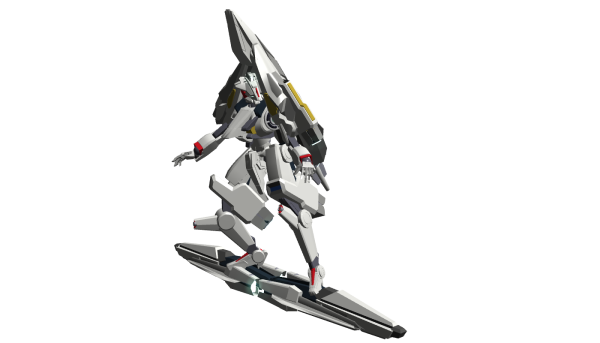
OOC Notes
Whisper created this article on 2020/04/05 23:10.
Approved by Syaoran on 12/26/2020
| Products & Items Database | |
|---|---|
| Product Categories | mecha |
| Product Name | Banshee-class Strike Frame |
| Nomenclature | NH-VF-1 |
| Manufacturer | Noval Heavy Industries |
| Year Released | YE 42 |
| Price (KS) | 140 ,000.00 KS |
